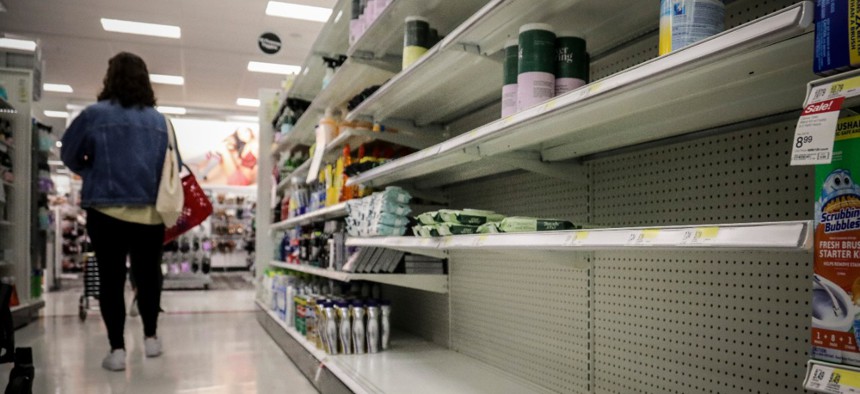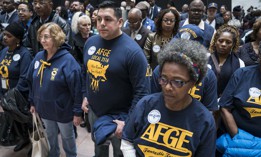Following the virus’s rapid spread beyond China (which has been worst in South Korea, Italy, and Iran), many Americans are likely to become sick, and some will be hospitalized or die. COVID-19 has already sickened and killed nursing-home residents in Washington State, among others. At present, the health system cannot cope with a rapid increase of COVID-19 patients, plus the “worried well”—uninfected patients seeking testing or treatment. And COVID-19 patients won’t be the only ones who suffer; many avoidable deaths will occur from everyday causes, such as diabetes, cancer, and heart disease. Pregnant women and newborns may not get adequate care. With hospitals overrun, we could see crucial shortages of essential medicines and medical equipment. Without adequate training and infection control, health workers will be at risk. Ultimately, hospitals might begin triage, unable to treat everyone.
Social distancing may become the norm, as governments and organizations close schools, halt mass transit, and cancel sports, entertainment, religious, and political gatherings. People could be quarantined in their homes, medical facilities, apartments, or dormitories. During the SARS outbreak, Ontario implemented “work” quarantines whereby health workers could travel only between home and hospital. Telecommuting and remote learning could become common for businesses and universities. People may elect not to go to movies or restaurants, or to limit travel, disrupting daily life and the economy. The State Department has recommended against travel to several countries, and that list will expand. Conceivably, the federal government might warn against, or restrict travel to, American cities or states experiencing major outbreaks. The U.S. resorting to mass lockdowns like in China seems inconceivable, but small-scale, temporary cordons sanitaire (guarded areas no one can enter or leave) might be put into place.
So what can we do? Quite a lot, actually. Here are some straightforward steps we could take right now to limit the damage from this outbreak.
The Centers for Disease Control and Prevention and state and local health departments have been starved of funds, impeding crucial functions such as surveillance, case detection, and contact tracing. Public-health budgets have been slashed by one-third in recent years. Public-health advocates have pushed for a new Federal Emergency Response Fund , but one has never been created. Although the Trump administration requested just $2.5 billion for COVID-19 (half taken from existing funds for the Department of Health and Human Services), Congress passed an emergency appropriation of $8 billion, in line with prior allocations for H1N1 ($7.6 billion) and Ebola ($5.4 billion) . That funding needs to pay for a range of activities and organizations, including vaccine research, health departments, hospitals, and social safety nets.
Americans will need to agree on a “social compact” whereby individuals subject themselves to social separation for the common good, while the government meets their essential needs. People separated from society may be highly vulnerable, including persons who are elderly, disabled, or with chronic health conditions. The government will need to provide food, medicine, and support for the lonely, fearful, or depressed.
Inequity creates America’s biggest gap in preparedness. Nearly 28 million Americans are uninsured, and many millions more underinsured. Large migrant and undocumented populations have limited access to essential health services. Rural, disabled, and low-income populations face additional barriers. If the uninsured have reduced access to health care or fear deportation, they may stay away from hospitals even as they remain in the community, spreading COVID-19 and other viruses.
The answer to that challenge is to establish effective stopgap measures to ensure all costs related to COVID-19 are covered. Medicaid eligibility could be expanded for a limited duration, with a streamlined application process, a model employed by the Disaster Relief Medicaid program created in New York after 9/11. Or COVID-19 testing and treatment could be free of charge . Further, government should designate health facilities as enforcement-free zones for undocumented immigrants.
Hospitals will be the hardest hit. The major shortages of COVID-19 diagnostic test kits, including poor quality kits , are an early warning in this respect. The Food and Drug Administration has now expanded the number of laboratories authorized to conduct diagnostic testing. Keeping health workers safe should be the first priority, because they’re on the front lines. During Ebola, poor infection control exposed health workers to a deadly disease. Multiple countries reported health-worker deaths during the SARS, MERS, and now COVID-19 outbreaks. In California , two health workers contracted COVID-19 in hospitals. Already critical health-worker shortages in rural and poor areas will only grow if health workers are unable to come to work.
Medical equipment and essential medicines will be in short supply if we don’t expand the capacity of health facilities. For example, COVID-19 causes pneumonia and respiratory distress, requiring life-saving ventilators. Many patients develop hard-to-treat hospital-acquired infections , so an ample stockpile of antibiotics will be vital.
The failure to plan for health-system scarcity places us all at risk. But even now, urgent action and funding could enable us to play catch-up. Beyond funding, Congress must provide the FDA with the authority needed to prevent and mitigate medical supply-chain disruptions. Even with emergency funding, we are likely to experience shortages. When antiviral treatments and vaccines are developed, there won’t be enough to go around. That scarcity will require triage plans grounded in science and ethics, mindful of health-worker protection and patient need, and focused on aiding the most vulnerable.
Health communication will be vital. A single trusted source should inform the public what we know about COVID-19, what we don’t know, and what we’ll do to find out what we don’t know. Divisive politics, though, are already threatening the trust essential for public cooperation. When the president downplays the seriousness of the coronavirus (comparing it to a mild flu or cold) or makes inaccurate statements about transmission, the public becomes confused and fearful. When social and other media spread rumors and falsehoods, people may struggle to know how to protect themselves, or even turn to fear and prejudice, scapegoating Asian Americans.
When Vice President Mike Pence directed scientists to clear messages with the White House , he got it exactly backwards: The political class should clear health messages with trusted scientists at the CDC and NIH.
We face the prospect of major disruptions to society and the economy. While harms to health and well-being are foreseeable, these harms are not preordained. Much depends on still unanswered questions about COVID-19, but even more depends on whether our nation can come together to face a common threat. The federal government must commit to a surge in funding, planning, and action, all based on science. Most important, we must finally learn the lesson that prevention and preparedness are far better than playing catch-up for when the next novel pathogen strikes.









